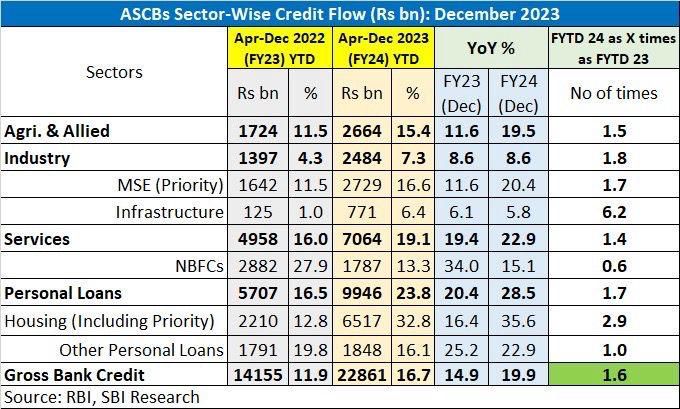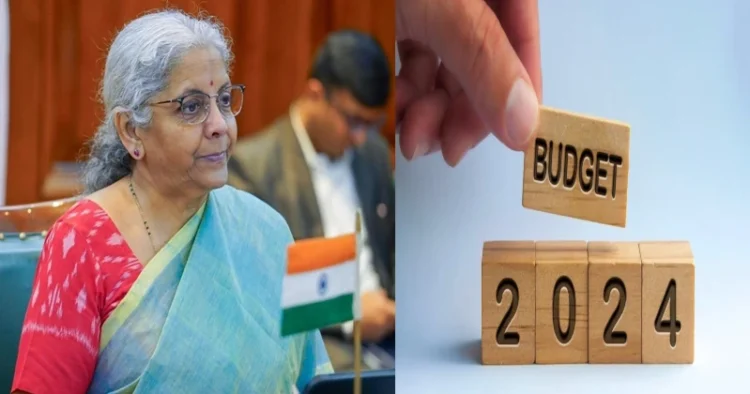On February 1, Union Finance Minister Nirmala Sitharaman will table the interim budget before the country heads for Lok Sabha polls later this year. This will be her sixth Budget as the Finance Minister and last in the second term of the Modi Government.
The interim budget will take care of the financial needs of the intervening period until a Government is formed after the Lok Sabha polls. A full budget will be presented by the new Government. The Budget Session of Parliament commenced on January 31, with President Droupadi Murmu addressing a joint sitting of Lok Sabha and Rajya Sabha.
In her address, the President said 2023 was a historic year for the country and among other steps, the country kept up the momentum of being the fastest-growing major economy. “The year 2023 was a historic year for India when it grew the fastest among major economies despite the global crisis. India grew about 7.5 per cent for two consecutive quarters,” she said. The last session before Lok Sabha polls, expected to be held in April-May this year, will have a total of eight sittings spread over 10 days.
A day before the session was set to start, Parliamentary Affairs Minister Pralhad Joshi, at an all-party meeting, said the budget session would mainly be devoted to the financial business relating to the interim union budget for 2024-25 and discussion on the Motion of Thanks on the President’s Address.
However, essential legislative and other business may also be taken up during this session. The all-party meeting was attended by 45 leaders from 30 political parties.
In addition, he also informed that Supplementary Demands for Grants for 2023-24 in respect of the Union Government will be discussed. The presentation and discussion on the Interim Budget of the Union Territory of Jammu & Kashmir for 2024-25 along with Supplementary Demands for Grants of Union Territory of Jammu & Kashmir for the financial year 2023-24 will also be taken up and voted.
Before the Finance Minister presents the vote on account, here is a quick look at the credit flow numbers for the last 9 months (Apr—Dec2023). At ₹22.8 Tn, in the first 9 months of this fiscal year, credit flow is a 1.6x, compared to ₹14.1 Tn for the same period, previous fiscal. Credit flow growth across sectors, such Agri (1.5x), MSME (1.7x), Infra (6.2x) and Services (1.4x), over previous period, is outstanding! Rural credit is booming, which discredits all talk of a rural distress. With such credit flow numbers, 7 per cent plus growth looks like the new normal in FY2024 and beyond.

State of the Economy
The Indian economy is projected to grow close to 7 per cent in the financial year 2024-25 which starts this April, said the Ministry of Finance in a review report. The strength of domestic demand has driven the economy to a 7 per cent plus growth rate in the couple of years.
India’s economy grew 7.2 per cent in 2022-23 and 8.7 per cent in 2021-22. The Indian economy is expected to grow 7.3 per cent in the current financial year 2023-24, remaining the fastest-growing major economy.
The robustness seen in domestic demand–private consumption and investment–traces its origins to the reforms and measures implemented by the government over the last 10 years. Also, firm GDP growth forecasts, inflation at manageable levels, political stability and signs of central bank tightening its monetary policy have all contributed to painting a bright picture for the Indian economy.
According to projections, India is expected to become the third-largest economy in the world with a GDP of USD 5 trillion in the next three years. Subsequently, India can aspire to become a USD 7 trillion economy in the next six to seven years (by 2030).
Highlights from the 2023-24 Budget
The last full Budget of Modi Government 2.0 had proposed to increase capital expenditure outlay by 33 per cent to Rs 10 lakh crore in 2023-24, which would be 3.3 percent of the GDP. It was almost three times the outlay in 2019-20.
Further, the government had proposed to increase the agricultural credit target to Rs 20 lakh crore with a focus on animal husbandry, dairy and fisheries. The agriculture sector of the country has been growing at an average annual growth rate of 4.6 per cent in the last six years.
Like the previous two Union Budgets, the Union Budget 2023-24 was also presented in paperless form.
Presenting the Union Budget 2023, Union Finance Minister Nirmala Sitharaman pegged the fiscal deficit target for 2023-24 at 5.9 per cent of gross domestic product (GDP). The Finance Minister further said that the government intends to bring the fiscal deficit below 4.5 per cent of GDP by the financial year 2025-26.
The 2023-24 Budget document noted that the Indian economy was backed by strong macroeconomic fundamentals, and there are ample indicators to back it. Be it capital expenditure, the asset quality of banks, foreign exchange reserves, GST collections, fiscal consolidation, and convergence of wholesale and retail inflation, all these indicators were on strong ground.
Prime Minister Narendra Modi, hailing what he called the “first budget of Amrit Kaal,” said that it would lay a strong foundation for building a developed India by 2047.



















Comments